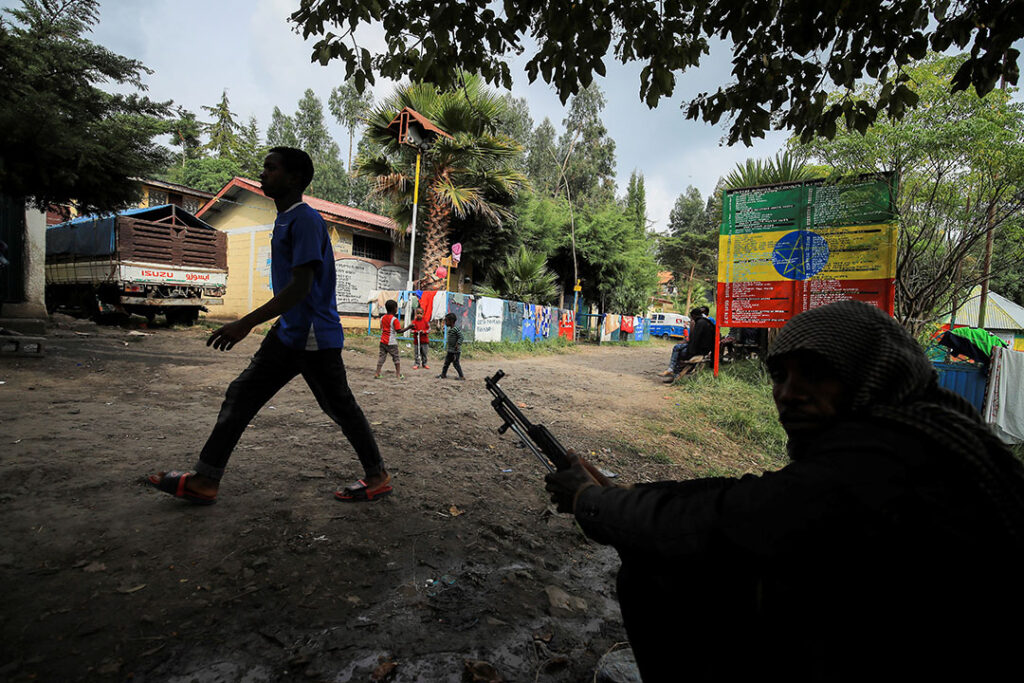Clashes are ongoing in Ethiopia’s Amhara region, where an ethnically based militia known as the Fano is battling the Ethiopian National Defense Force (ENDF) for control.
In January, fighting broke out in Debre Birhan, a town 120 kilometers north of the capital, Addis Ababa. Fano militants used conventional and ambush attacks against government forces, the website Borkena reported.
Fighting also was reported in the towns of Wollo, Gojjam and Gondar.
“The conflict continues to escalate, with widespread violence and heavy clashes across the Amhara region and parts of Oromia,” Hone Mandefro, of the Amhara Association of America, and Henok Ashagray, of the Centre for Human Rights at the University of Pretoria, wrote in an article for Inter Press Service. “Government forces have intensified their military campaigns and are now using airstrikes and drones, while Fano militias resist fiercely. The fighting is severe and prolonged, with territorial control frequently shifting.”
The violence comes after the ENDF launched a major military operation in October 2024 to defeat the Fano. But observers believe the Fano still control as much as 80% of the region. The militia operates mostly outside large population centers and has only briefly controlled major towns or roads.
The fighting affects nearly every aspect of life in the Amhara region, disrupting farming and trade, shutting down health clinics, and raising the risk of famine. More than 4.1 million children are out of school, and more than 4,000 schools are closed, according to the United Nations Office for the Coordination of Humanitarian Affairs.
Analysts believe that despite the heavy toll, the Fano continue to enjoy widespread public support, particularly in rural areas.
“Local communities appear to be closely collaborating with the groups,” the Rift Valley Institute said in a 2024 analysis. “This seems to include information sharing, logistical support, and the provision of safe havens. The structure of the Fano, which mostly involves small groups operating in or near their home areas, means that they are able to rely on close ties with local communities.”
The Fano formed in 2016 as a protest movement and later became an armed group claiming to protect Amhara land rights and other interests. During the 2020 to 2022 war in the Tigray region, the Fano fought alongside federal government forces and reclaimed a disputed area known as Western Tigray. The Fano, as well as government and Tigrayan forces, were accused of widespread war crimes, including brutal attacks against civilians.
Near the end of the conflict, the ENDF began disarming and arresting Fano fighters, and, in 2023, the Fano launched an insurgency.
Amid the prolonged insurgency, there is some positive news. In the seven weeks ending on January 31, there was a 44% decrease in fighting in the Amhara region compared to the previous seven weeks, according to the Armed Conflict Location and Event Data (ACLED) Ethiopia Peace Observatory project.
ACLED analysts believe this decrease was due to a lull during the holidays and the fact that an estimated 4,000 Fano fighters surrendered. They also credit peace talks initiated by diplomats from the African Union, European Union, United States and others. However, the fragmented nature of the Fano makes it difficult to hold discussions with all parties to the conflict. There are at least nine Fano groups, including some that are feuding with each other.
“The two conflicting parties face a long road to sitting at the negotiation table, particularly due to a lack of unity among Fano militias,” according to a 2024 ACLED report. “One-to-one peace talks with each militia would complicate negotiations and offer less guarantee of establishing and sustaining peace in the region. Additionally, without a unified Fano to join peace talks, the government’s efforts to end the conflict have come up short.”

